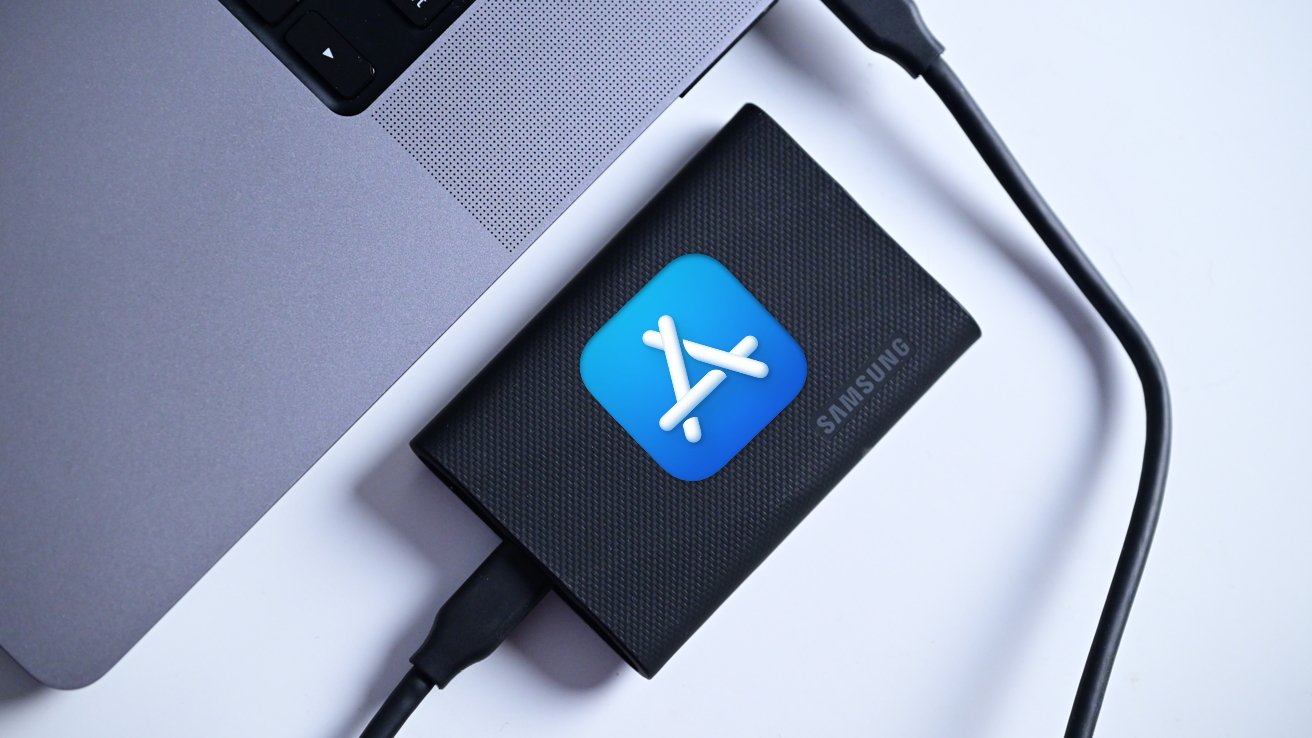With the release of macOS Sequoia 15.1, Apple has introduced a feature that allows users to install applications from the Mac App Store directly onto external SSDs. This enhancement is particularly beneficial for those looking to conserve internal storage space, especially given that many Mac models come with a base storage of 256GB, which can fill up quickly. This guide provides a detailed walkthrough on how to utilize this feature effectively.
Understanding the New Installation Option
Traditionally, applications downloaded from the Mac App Store were installed directly onto the Mac’s internal storage. However, with the latest update, users now have the flexibility to install larger applications—specifically those exceeding 1GB in size—onto an external SSD. This change is aimed at optimizing internal storage usage and providing users with more control over their storage management.
Step-by-Step Guide to Installing Apps on an External SSD
1. Update to macOS Sequoia 15.1: Ensure your Mac is running macOS Sequoia 15.1 or later. To check for updates, navigate to the Apple menu, select System Settings, and click on Software Update.
2. Connect Your External SSD: Plug in your external SSD to your Mac. It’s crucial that the drive is connected during the setup process to enable the installation option.
3. Access Mac App Store Settings:
– Open the Mac App Store application.
– From the App Store menu in the top-left corner, select Settings.
4. Enable External Installation:
– In the Settings window, look for the option labeled Download and install large apps to a separate disk.
– Check the box next to this option to enable it.
5. Select the External Drive:
– A dropdown menu will appear below the enabled option.
– Click on the dropdown and select your connected external SSD from the list.
6. Install Applications: With the settings configured, any application from the Mac App Store that is larger than 1GB will now be installed onto the selected external SSD by default.
Important Considerations
– Feature Availability: If you do not see the Download and install large apps to a separate disk option in the App Store settings, it may be because your system is not updated to macOS Sequoia 15.1. Ensure your operating system is up to date to access this feature.
– Drive Connection: The external SSD must be connected during the setup process. If the drive is disconnected, the option may become deselected automatically. Always verify that the drive is connected when enabling this feature.
– Application Data Storage: While the main application files are stored on the external SSD, some applications may still create temporary or permanent files on the internal drive during operation. Be mindful of this when managing your internal storage.
– Managing Installed Applications: Currently, the Mac App Store does not provide an option to choose the installation location for individual applications. Once the feature is enabled, all eligible applications (those over 1GB) will be installed on the external SSD. To revert to installing applications on the internal drive, you will need to disable the feature in the App Store settings.
– Portability and Data Migration: If you plan to use your external SSD with multiple Macs or intend to migrate data to a new Mac, remember that applications installed on the external drive will not be included in standard data migration processes. Ensure you have the external SSD connected to access these applications on different machines.
Benefits of Installing Applications on an External SSD
– Conserving Internal Storage: By offloading large applications to an external SSD, you free up valuable space on your Mac’s internal drive, which can enhance system performance and accommodate more files and applications.
– Flexibility and Portability: An external SSD allows you to carry your applications with you and use them on different Macs, provided they are compatible and the external drive is connected.
– Cost-Effective Storage Expansion: Upgrading internal storage on a Mac can be expensive and, in many cases, not feasible after purchase. Utilizing an external SSD offers a more affordable and flexible solution to expand your storage capacity.
Potential Limitations and Considerations
– Performance Variations: The performance of applications installed on an external SSD may vary depending on the speed and quality of the external drive and the connection interface (e.g., USB, Thunderbolt). High-speed SSDs connected via Thunderbolt are recommended for optimal performance.
– Application Compatibility: Not all applications may function seamlessly when installed on an external drive. It’s advisable to test critical applications to ensure they operate correctly in this configuration.
– Data Security and Backup: Ensure that your external SSD is reliable and that you have a backup strategy in place. External drives are susceptible to physical damage and data corruption, so regular backups are essential to prevent data loss.
Conclusion
The ability to install Mac App Store applications on an external SSD in macOS Sequoia 15.1 offers users greater flexibility and control over their storage management. By following the steps outlined above, you can effectively utilize this feature to optimize your Mac’s performance and storage capacity. Always consider the potential limitations and ensure that your external SSD is of high quality to provide a seamless experience.


